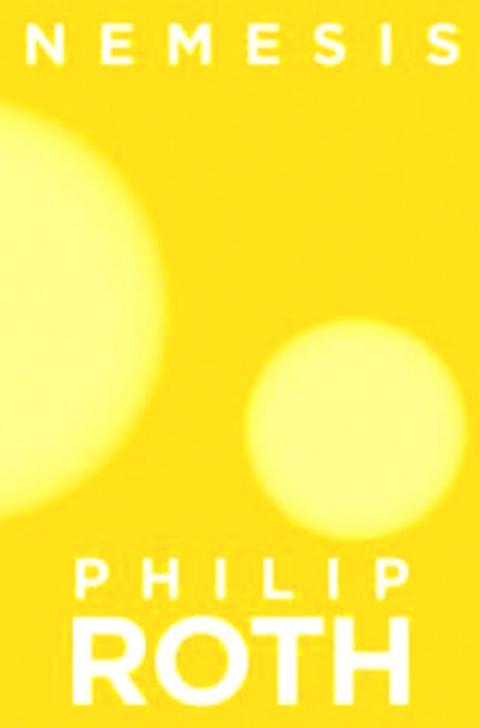Carmen Callil withdrew from the judging panel of the Man Booker International prize when the other judges decided to give its award to Philip Roth. The American writer, she said, “goes on and on and on about the same subject in almost every single book. It’s as though he’s sitting on your face and you can’t breathe.” Which was a funny thing to say, not just for the obvious reasons, but because the subject of breathlessness comes up quite frequently in his latest novel — first published in the UK some seven months before Callil made her intemperate remarks.
The breathlessness in question comes as a result of polio, an epidemic of which strikes Newark, New Jersey, in the baking summer of 1944. This is surpassed only by death as the worst thing that can happen when polio strikes; that, and the fact that its victims are chiefly children. The novel’s chief protagonist, 23-year-old Bucky Cantor, an athletic young man declared unfit for military service due to his poor eyesight, agonizes about the appalling fates that await the victims: He’s a playground director, God-like in the eyes of his young charges, a source of unimpeachable rectitude and kindness. But he can do nothing to prevent the spread of the disease. And as someone supremely active and fit, he can think of no worse existence than that of being trapped inside an iron lung.
Now, as for going on and on about the same thing, you could argue that once again, Roth is going on about death, but that doesn’t quite sound right here. What Roth is going on about in this book — and I would like to express this as tentatively as possible, because this is not an easy novel to second-guess, or, if you like, reverse-engineer — is the malicious capriciousness of fate, or the fallibility of God.

This is, and is not, classic Roth. It is, in the sense that here he has returned to the scene of his childhood. Were the author’s name not anywhere on or in the book, the setting — among the Jewish families of Newark in 1944 — would be pretty much a giveaway. It’s Roth’s turf, and he owns it almost aggressively. However, what he’s getting up to is not as obvious as it has been hitherto. Lately in his career, it could be broadly summed up by the Rolling Stones’ line: “what a drag it is getting old.” But here we have something similar to the counter-factual approach in his magnificently terrifying The Plot Against America. Only the threat is more ambiguous, more existential. (It is not lazy association to compare this with Camus’ La Peste.) In one early scene, Cantor stands up, one against 10, to a menacing group of Italians who have come, they say, to give everyone polio; they spit all over the tarmac, and once Cantor’s seen them off, he scrubs the spots clean.
But as another character says: “You washed the spit away but you didn’t wash the polio away. You can’t wash the polio away. You can’t see it. It gets in the air and you open your mouth and you breathe it in and the next thing you got the polio.”
And the character — a hot-dog vendor who himself has been accused of spreading the disease — adds, almost bathetically: “It’s got nothing to do with hot dogs.”
It is tempting, at this point, to think that there is something allegorical here: that polio is anti-Semitism, perhaps. But this is too reductive for such a superbly managed novel. It may not be long, but it’s full, complete. For one thing, as the above quotation should show you, Roth’s ear has never been better, and there is an almost unbelievable mastery of technique in the way that the prose slips between narrative and speech. This is unputdownable, and although it is one of my jobs to show you how authors do this kind of thing, I can’t here, except by invoking some kind of magical talent on Roth’s part.
I won’t tell you what happens, because that might dilute the full effect of the tragedy. (The better a man Cantor is portrayed as, the worse, you come to fear, his fate will be.) Suffice it to say that you know something awful is going to happen. The clue is in the title.

The canonical shot of an East Asian city is a night skyline studded with towering apartment and office buildings, bright with neon and plastic signage, a landscape of energy and modernity. Another classic image is the same city seen from above, in which identical apartment towers march across the city, spilling out over nearby geography, like stylized soldiers colonizing new territory in a board game. Densely populated dynamic conurbations of money, technological innovation and convenience, it is hard to see the cities of East Asia as what they truly are: necropolises. Why is this? The East Asian development model, with

Desperate dads meet in car parks to exchange packets; exhausted parents slip it into their kids’ drinks; families wait months for prescriptions buy it “off label.” But is it worth the risk? “The first time I gave him a gummy, I thought, ‘Oh my God, have I killed him?’ He just passed out in front of the TV. That never happens.” Jen remembers giving her son, David, six, melatonin to help him sleep. She got them from a friend, a pediatrician who gave them to her own child. “It was sort of hilarious. She had half a tub of gummies,

The wide-screen spectacle of Formula One gets a gleaming, rip-roaring workout in Joseph Kosinski’s F1, a fine-tuned machine of a movie that, in its most riveting racing scenes, approaches a kind of high-speed splendor. Kosinski, who last endeavored to put moviegoers in the seat of a fighter jet in Top Gun: Maverick, has moved to the open cockpits of Formula One with much the same affection, if not outright need, for speed. A lot of the same team is back. Jerry Bruckheimer produces. Ehren Kruger, a co-writer on Maverick, takes sole credit here. Hans Zimmer, a co-composer previously, supplies the thumping

There is an old British curse, “may you live in interesting times,” passed off as ancient Chinese wisdom to make it sound more exotic and profound. We are living in interesting times. From US President Donald Trump’s decision on American tariffs, to how the recalls will play out, to uncertainty about how events are evolving in China, we can do nothing more than wait with bated breath. At the cusp of potentially momentous change, it is a good time to take stock of the current state of Taiwan’s political parties. As things stand, all three major parties are struggling. For our examination of the